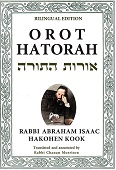
The Talmud relates that Rabbi Katina once passed by the house of a certain ba’al ov, a necromancer, when the earth suddenly shook. The rabbi called out, “Does the necromancer know what is the meaning of this rumbling?” The medium responded:
“Katina, Katina, why should I not know? When the Holy One remembers His children, who are in a state of suffering amongst the nations of the world, He lets two tears fall. When they hit the ocean, the sound is heard from one end of the world to the other. That is the rumble of an earthquake.”
Rabbi Katina immediately called out, “The necromancer is a liar and his words are false. Were that the case, we should have heard two rumblings.” The Talmud then notes that in fact there were two rumblings of the earth, but the rabbi did not want people to be led astray and follow the necromancer (Berachot 59a).
This story raises many questions. What is the meaning of two tears falling from heaven? What do the misfortunes of the Jewish people have to do with catastrophes in other parts of the world? And why does the Talmud tells us that the source for this metaphysical explanation of earthquakes — an explanation that the Sages accepted! — was a necromancer, a practitioner of witchcraft explicitly forbidden by the Torah, one who divines secrets by communicating with the dead?
Purposeful Destruction
Just as many written symbols join together to comprise a book, so too, every event that occurs, even the most insignificant, plays its part in bringing the world towards its ultimate goal. Even those events that appear to obstruct progress, we should recognize that “All that God does will be forever... God made it so that people should fear Him“ (Ecclesiastes 3:14).
In other words, if we wish to understand the purpose of various phenomena in the world, we must evaluate how they contribute to humanity’s moral and spiritual development
The horror of an earthquake — which may uproot nations, wreak vast destruction, and bury thousands of people — raises difficult questions. Events like these challenge us to fathom God’s wisdom and providence. What is the purpose of such terrible destruction?
We may begin to answer these questions only after we recognize that the path to establishing humanity’s ethical nature is complex. Human societies are often plagued with serious defects, faults so deeply ingrained that they cannot be corrected as long as society remains undisturbed. Only God’s wisdom can determine at what point society requires such a major shake-up, disrupting the world’s material and spiritual well-being, in order to enable the necessary correction.
The Status of the Jewish People
How can we gauge the moral state of humanity? One indication is the status of the Jewish people. This nation, by virtue of its unique spiritual gifts to the world — the Torah and monotheistic belief — should be highly respected among the nations. If that is not the case, this attests to serious defects in humanity, which the Jewish people certainly contributes its portion. No one can rightfully claim that the Jewish people, with its special history and function in the world, deserves to be the subject of such baseless hatred and disgrace.
The sorry state of the Jewish people reveals a deep moral deficiency in the world. It is an indication of many other defects that have been absorbed in mankind’s turbid nature — until Divine providence demands their redress, even by great upheaval.
Two Divine Tears
Earthquakes are a vivid example of great upheaval. This terrible event is accompanied by a general descent in society; the material collapse leads to an ethical decline. Establishing an organized society secures many moral benefits. When the overall goal decrees that a large segment of humanity must be uprooted, this brings about a physical and spiritual deterioration.
This decline contradicts God’s aspiration, Who desires the best for His creation. Thus, the Talmud’s metaphor of two tears is an expression of God’s pain and sorrow. Since we cannot truly grasp the purpose for this destruction, the tears are said to drop into the ocean: their positive contribution is beyond our perception. The impact of this event, however, resounds throughout the world — “it is heard from one end of the world to the other” — through the hidden ties that connect all of humanity together.
Theoretical Knowledge
It is true that upheaval may serve positive and corrective purposes. But this knowledge may only be used by the righteous and the pure-hearted. In the hands of the wicked, it becomes a tool of destruction, justifying the breakdown of all physical and spiritual good. The necromancer, who was not guided by the ideals of justice and truth, praised the value of upheaval. Yet, “he is false and his words are false.” We have no way to properly assess the results of destructive actions. In addition, the destruction must prepare the way for a new framework, and that is beyond our capabilities.
Rabbi Katina was correct in rejecting the use of upheaval as a practical tool to better humanity. Its value is only theoretical, as a way to understand Divine providence over thousands of generations. He rejected the necromancer’s words so that the people would not follow his mistaken ways and come to justify destructive acts. Such an approach is a spiritual disease, bringing much evil into the world. The necromancer, who attempts to communicate with the dead, is like the anarchist who detests organized society. In fact, it is only through orderly life that humanity can realize its true potential for goodness and morality.
(Adapted from Ein Eyah vol. II, pp. 311-312)
Illustration image: Alex Perez on Unsplash





